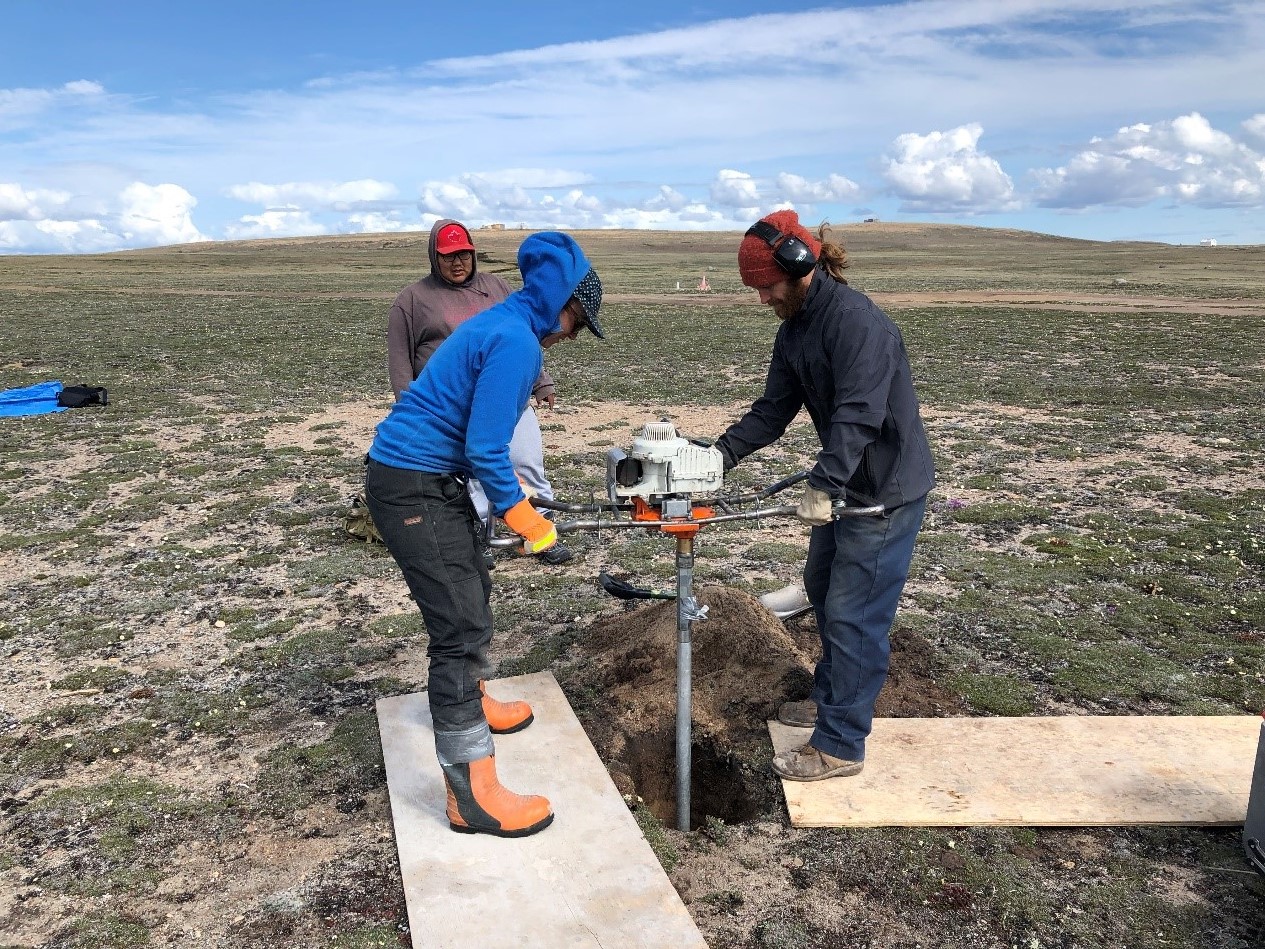The arctic tundra microbiome project
Authors
- E.M. Bottos, Thompson Rivers University, Kamloops, British Columbia, Canada, ebottos@tru.ca
- D.A. Cowan, Centre for Microbial Ecology and Genomics, University of Pretoria, Pretoria, South Africa
- I.D. Hogg, Polar Knowledge Canada, Canadian High Arctic Research Station, Cambridge Bay, Nunavut, Canada
- S. Coulombe, Polar Knowledge Canada, Canadian High Arctic Research Station, Cambridge Bay, Nunavut, Canada
- B. Vandenbrink, Polar Knowledge Canada, Canadian High Arctic Research Station, Cambridge Bay, Nunavut, Canada
Citation information
Bottos, E.M., Cowan, D.A., Hogg, I.D., Coulombe, S. and Vandenbrink, B. 2020. The arctic tundra microbiome project. Polar Knowledge: Aqhaliat Report, volume 3, Polar Knowledge Canada, p. 12–14. DOI: 10.35298/pkc.2020.03.eng
Article
Researchers from Thompson Rivers University in British Columbia and the University of Pretoria in South Africa are working with staff at the Canadian High Arctic Research Station (CHARS) to investigate the seasonal responses of the tundra soil microbiome – the entire community of microorganisms in tundra soil. The research will use a collection of advanced molecular techniques, including "Next Generation" DNA sequencing, to study changes in community structure and function of the tundra microbiome over a full year. The data generated will contribute to our understanding of how tundra microbiomes are changing over time with a warming climate.
Microbes play very important roles in tundra soils by providing essential nutrient-cycling services, such as the fixation of atmospheric carbon and nitrogen, the breakdown of large molecules derived from seasonal plant inputs, and much more. Understanding the ways in which these services may change over time, particularly in response to climate change, is vital to understanding the future of the tundra – as a matrix for carbon sequestration or release, as a substrate for surface vegetation, and as a platform for supporting animal and human populations.
This project was initiated in August 2019 and will run until August 2021. A coastal site north-west of Cambridge Bay was selected, and the first set of tundra soil samples was recovered. Soil and permafrost cores were obtained using a motorized auger along with sterile sampling tools and sample bags. The plan is to sample at this same site repeatedly on a monthly basis throughout the year, when the ground is neither frozen nor snow-covered. Continuous measurements of soil temperature and moisture are being carried out at the site throughout the year. Samples are stockpiled in CHARS freezers for processing at the end of August 2021.
The key element of the processing step will involve extraction and identification of DNA in the samples. The complete analysis of these samples will generate very large datasets that can be studied to understand how the populations of bacteria, archaea, fungi, and viruses change over time, and how their activity responds to seasonal changes in temperature and water availability.
The findings of this work will help local communities better predict changes in the tundra ecosystem brought on by a warming climate, and to evaluate how these changes may impact future usage of tundra landscapes. This research is facilitated by community members, participating as CHARS Science Rangers and summer students.

Figure 1: Tundra soil and permafrost coring.

Figure 2: The tundra microbiome project sampling area, north-west of Cambridge Bay.
Polar Knowledge Canada
For media inquiries, contact:
communications@polar-polaire.gc.ca
Page details
- Date modified: